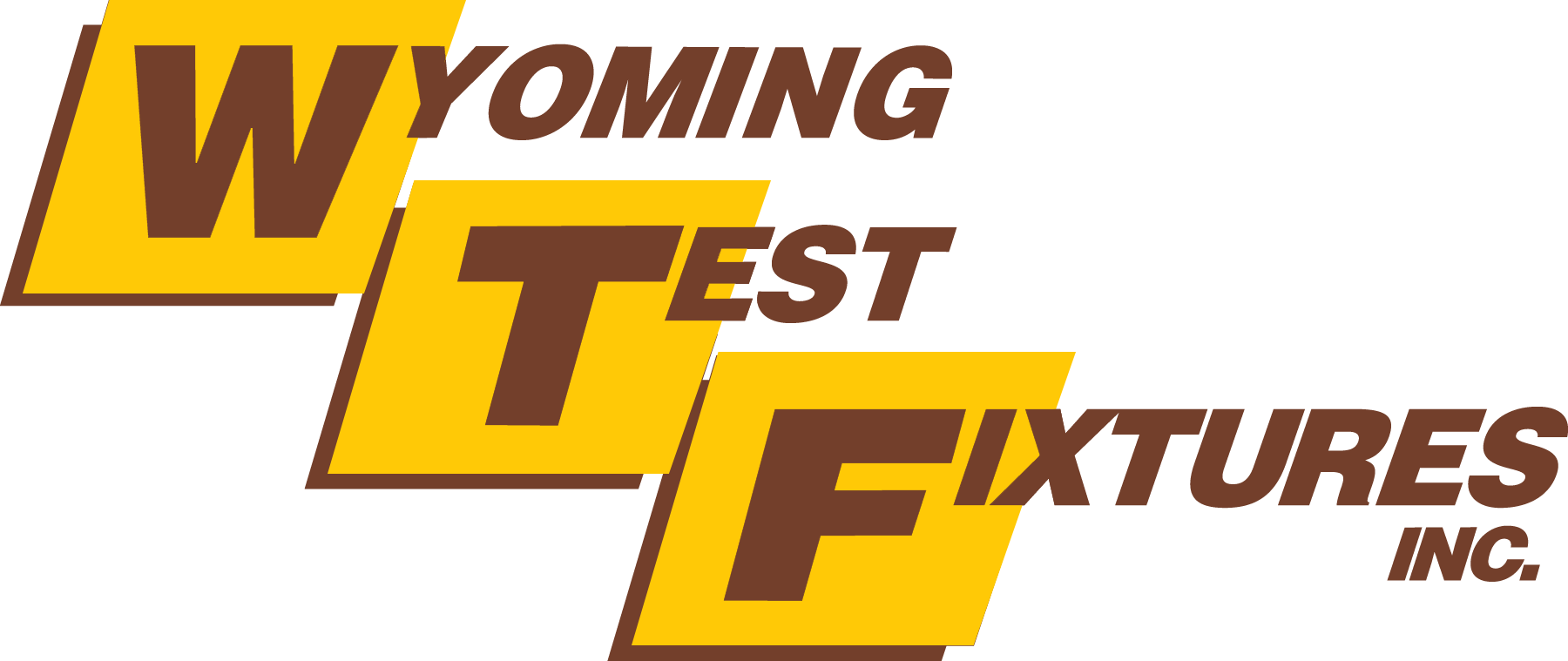Short Beam Shear Test Fixture (ASTM D2344)
Model No. WTF-SB (Stainless Steel)
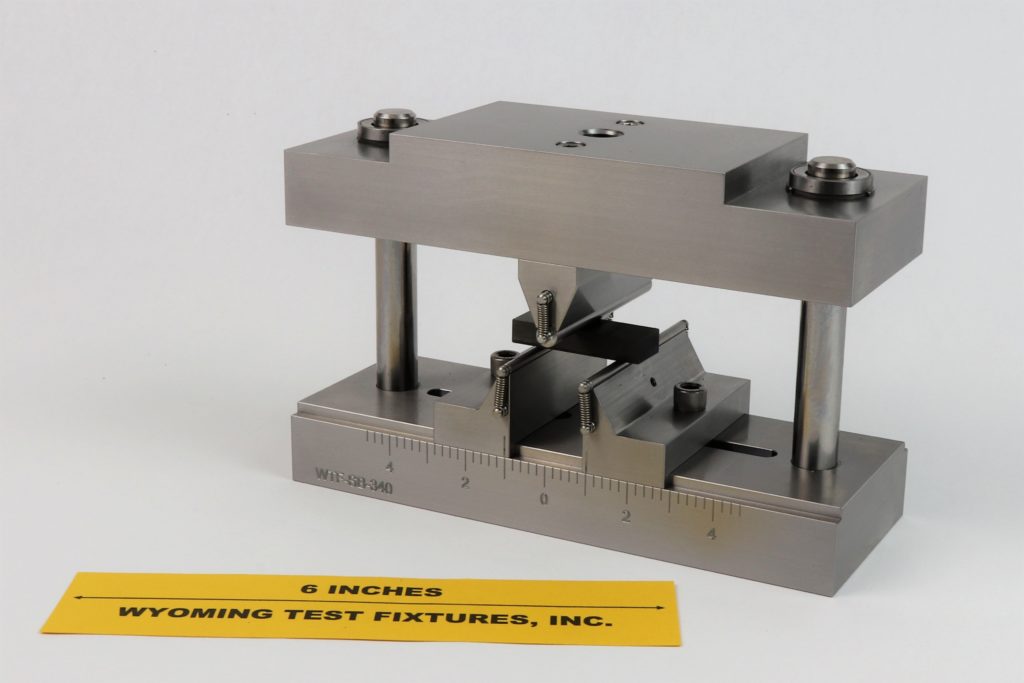
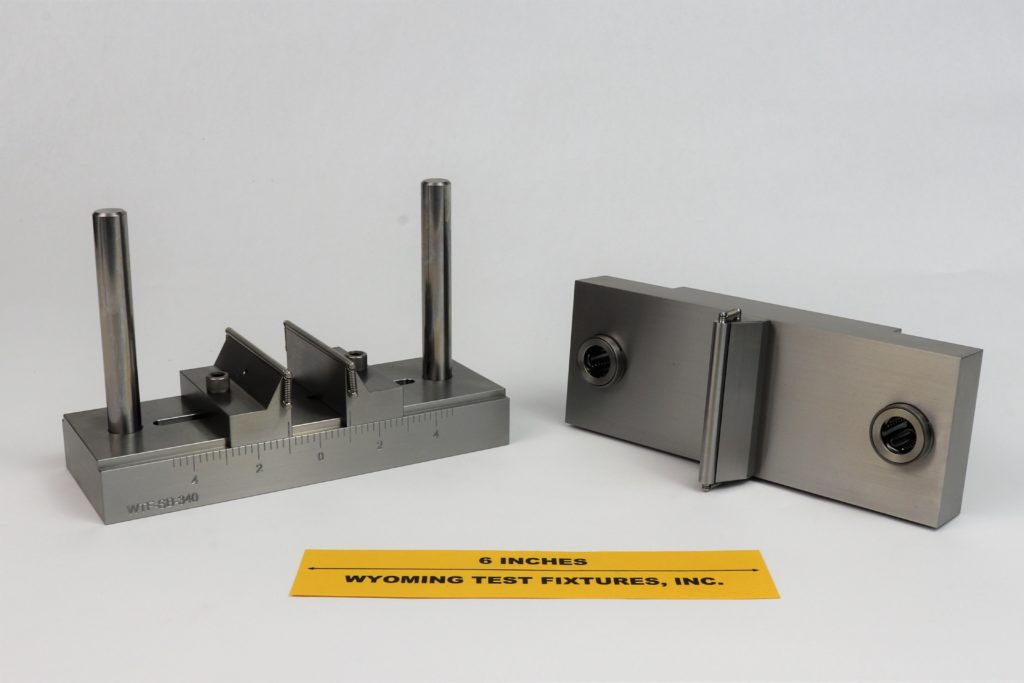
Fig. 1: Standard Short Beam Shear Test Fixture (ASTM D2344)
An assembled short beam shear test fixture is shown in the top photograph of Fig. 1, but without a test specimen mounted in it. This fixture is commonly used to test composite materials interlaminar (through-the-thickness) shear, in general accordance with ASTM Standard D2344 (Reference 1).
ASTM Standard D2344, in existence since 1965, now recommends a specimen support span length-to-specimen thickness ratio of four for all types of materials. A typical specimen on the order of 0.1 in. thick would thus be tested at a support span length of 0.4 in.
To accommodate various laminate thicknesses, the span length of the fixture is infinitely adjustable over the full range of span lengths up to approximately 4.5 in. Scale markings are engraved on the base to aid in setting the desired span length, by sliding the specimen supports to the required positions. These specimen supports are then clamped in place using the Allen head screws shown.
Two hardened steel alignment posts, each 0.5 in. in diameter, are fixed in the base. The top plate, containing linear bearings, moves freely up and down on these alignment posts, thus maintaining alignment between the two lower supports and the upper loading cylinder.
The two supports and the loading head are hardened steel cylinders, each 2.5 in. wide, held in v-grooves by small springs on each end. This permits them to be rotated, and also to be easily replaced if desired. Unless specified otherwise, 1/8 in. diameter supports and a 1/4 in. diameter loading head will be supplied, as specified in ASTM Standard D2344. However, supports and loading heads of any other diameters can be provided, if desired.
Adjustable mechanical stops for centering the specimen in the fixture can also be added as an option, as shown below in Fig. 2.
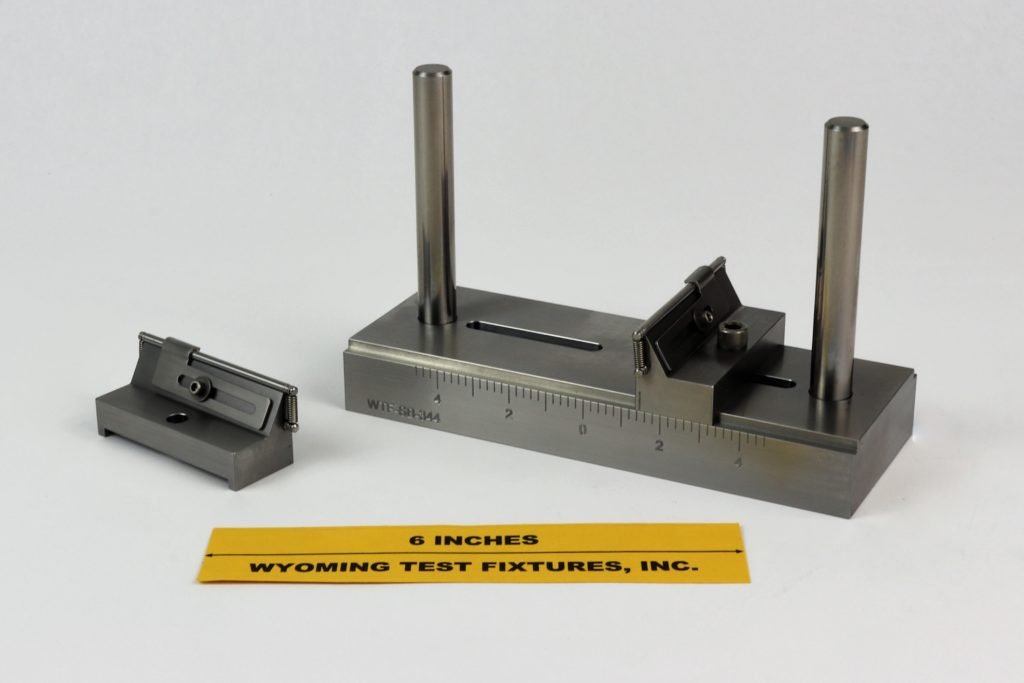
Fig. 2: Adjustable Specimen Centering Stops for the Short Beam Shear Test Fixture.
The fixture is designed to rest unconstrained directly on the base of the testing machine. A compressive loading can be applied by the loading head of the testing machine directly onto the top plate of the short beam shear test fixture. Alternatively, a 0.50 in.-13 UNC threaded hole is provided in the top plate, as can be seen in the top photograph of Fig. 1, to mount an optional adapter which in turn can be attached to the crosshead of the testing machine.
Because of the relatively large support span possible, i.e., 4.5 in., this fixture is also frequently used for three-point flexure testing (ASTM D790 and D7264). And with the optional adjustable-span four-point loading head shown in Fig. 3 below, this fixture can also be used for four-point flexure testing (ASTM D6272 and D7264).
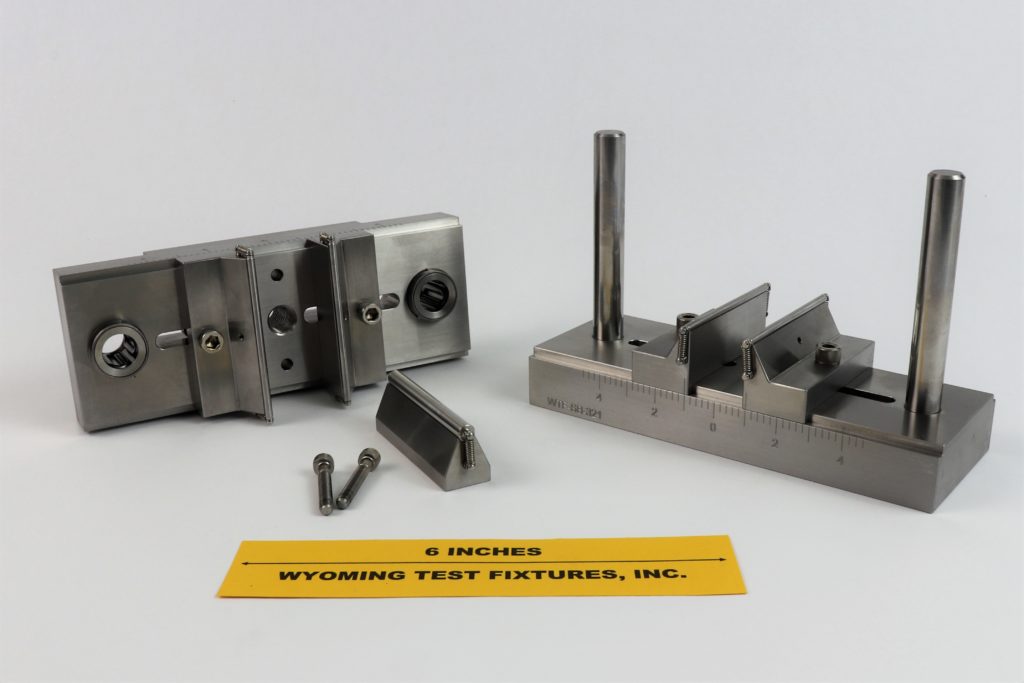
Fig. 3: Combined Three- and Four-Point Loading Short Beam Shear Test Fixture shown with both Three- and Four-Point Loading Heads.
However, for both three- and four-point flexure testing, if the corresponding ASTM standards are to be strictly conformed to, the loading and support cylinder diameters must be changed. Short beam shear standard ASTM D2344 specifies 0.125 in. diameter support cylinders and a 0.250 in. diameter loading cylinder, while flexure standards ASTM D790 and D6272 specify 0.394 in. (10mm) diameter loading and support cylinders and ASTM D7264 specifies 0.250 in. diameter cylinders. The ISO, EN, and other standards specify still other diameters.
This inconsistency among the standards is unfortunate since test results are actually affected very little by these relatively small variations in cylinder diameter (see, for example, References 2, 3, 4).However, we can provide whatever diameters are desired, and the cylinders are easily interchanged since they are held in place by springs.
The short beam fixture, in either the three-point or four-point loading configuration, is also used for the flexural testing of brittle materials such as ceramics and ceramic-matrix composites when articulation of the loading and support points is not necessary. Articulation is often not required when these brittle specimens are sufficiently flat, e.g., by surface grinding. If specimen twist or other irregularities are present in brittle materials, a fully-atriculated Ceramic Flexural Strength test fixture such as our Model WTF-CF (see Section D-4) may be required.
A fixture incorporating screw-adjustable supports (that move in and out together) is also available, as shown below in Fig. 4.
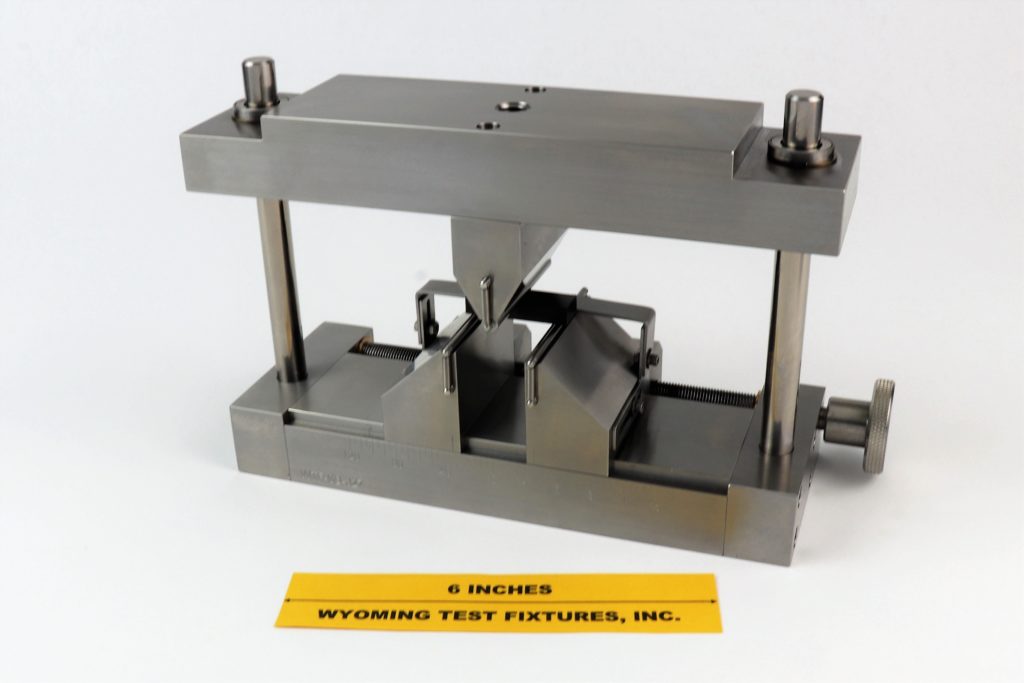
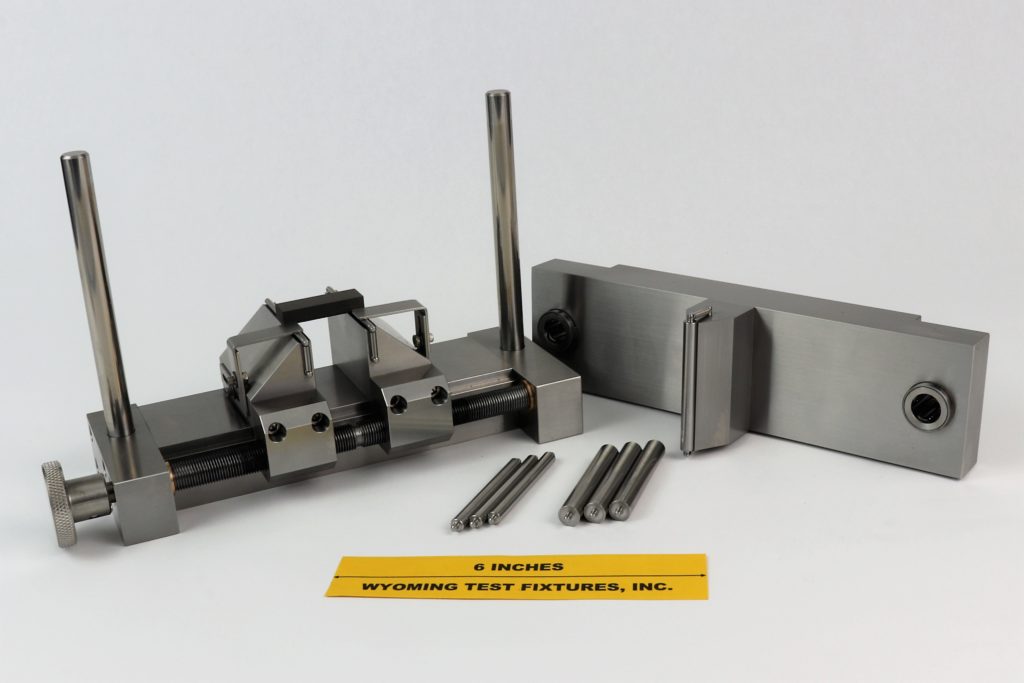
Fig. 4: Front and Rear Views of Screw-Adjustable Short Beam Shear and/or Flexure Test Fixture with Screw-Adjustable Supports (optional Fixed-Span Four-Point Loading Head and various alternate Support/Loading Cylinder diameters shown in foreground.)
Special-size fixtures, either larger or smaller than the standard size, can also be fabricated, as indicated in Fig. 5 below.
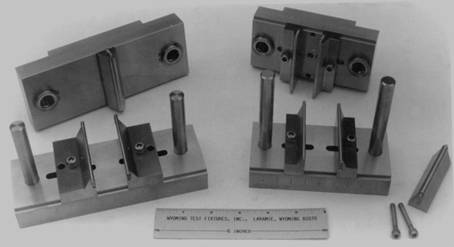
Fig. 5: Standard Short Beam Shear (ASTM D2344) Test Fixture (left) and Special Compact Reduced-Span Three-/Four-Point Shear Test Fixture (right).
Sources of Additional Information:
1) ASTM Standard D2344-13, "Short Beam Strength of Polymer Matrix Composite Materials and Their Laminates by Short-Beam Method," American Society for Testing and Materials, West Conshohocken, Pennsylvania (first published in 1965).
2) D.F. Adams and E.Q. Lewis, “Experimental Study of Three- and Four-Point Shear Test Specimens,” Journal of Composites Technology and Research, Vol. 17, No. 4, October 1995, pp. 341-349.
3) E.Q. Lewis and D.F. Adams, "An Evaluation of Composite Material Shear Test Methods," Report UW-CMRG-R-91-103, Composite Materials Research Group, University of Wyoming, Laramie, Wyoming, May 1991.
4) D.F. Adams and J.M. Busse, “Suggested Modifications of the Short Beam Shear Test Method,” Proceedings of the 49th International SAMPE Symposium, Long Beach, CA, May 2004.
